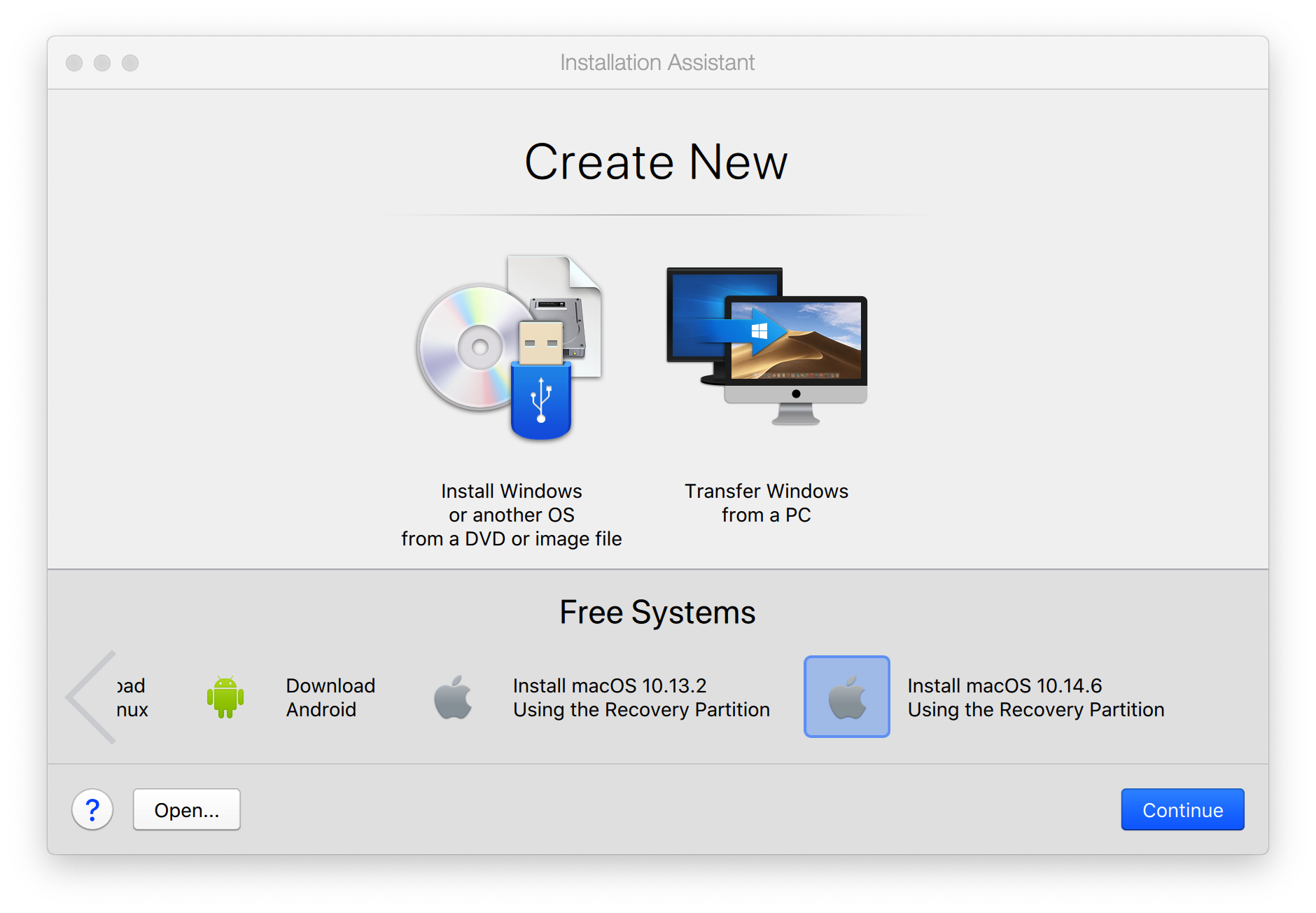Whenever you successfully install macOS Mojave on VMware then you need to apply the steps in order to install VMware tools with easier steps below. At the first step, you need to launch the VMware and switch to the macOS Mojave virtual machine and wait until the macOS Mojave opens.
Check compatibility
You can upgrade to macOS Mojave from OS X Mountain Lion or later on any of the following Mac models. Your Mac also needs at least 2GB of memory and 12.5GB of available storage space, or up to 18.5GB of storage space when upgrading from OS X Yosemite or earlier.
MacBook introduced in 2015 or later
MacBook Air introduced in 2012 or later
MacBook Pro introduced in 2012 or later
Mac mini introduced in 2012 or later
iMac introduced in 2012 or later
iMac Pro (all models)
Mac Pro introduced in 2013, plus mid-2010 or mid-2012 models with a recommended Metal-capable graphics card.
To find your Mac model, memory, storage space, and macOS version, choose About This Mac from the Apple menu . If your Mac isn't compatible with macOS Mojave, the installer will let you know.
The following links are available to download macOS Mojave on Virtual Machines: VMware: macOS Mojave VMware Image Download (One Full – Google Drive) This is the specially created record file where you can introduce macOS Mojave on the VMware machine. It is a solitary document. Install VMware Tools (Optional) Update macOS Mojave to the Latest Version (Optional) Step 1: Download the prerequisites. To install macOS Mojave on VMware using VMDK, you need to download the virtualization software like VMware Workstation or VMware Player, macOS Mojave 10.14 VMDK file and macOS Unlocker for VMware.
Download the File for macOS Mojave (Medi Fire) Install macOS Mojave VMware and VirtualBox. So, as long as there is a VMDK file then it is very easy to install macOS Mojave as a second operating system on VMware and VirtualBox. So far it works very well. And today, I spent some time installing macOS Mojave on VMware on my Windows 10. For your information, I am running AMD FX-8350 on my PC. Sai for mac. There are some additional steps we need to take if we want to run macOS Mojave on VMware on an AMD processor.
Make a backup
Before installing any upgrade, it’s a good idea to back up your Mac. Time Machine makes it simple, and other backup methods are also available. Learn how to back up your Mac.

Get connected

It takes time to download and install macOS, so make sure that you have a reliable Internet connection. If you're using a Mac notebook computer, plug it into AC power.
Download macOS Mojave
Download Vmware Tools For Mac
Mac shortcut for copy and paste. For the strongest security and latest features, find out whether you can upgrade to macOS Catalina, the latest version of the Mac operating system.
If you still need macOS Mojave, use this App Store link: Get macOS Mojave.
Begin installation

After downloading, the installer opens automatically.
Click Continue and follow the onscreen instructions. You might find it easiest to begin installation in the evening so that it can complete overnight, if needed.
Vmware Tools Mac Os X

If the installer asks for permission to install a helper tool, enter the administrator name and password that you use to log in to your Mac, then click Add Helper.
Allow installation to complete
Please allow installation to complete without putting your Mac to sleep or closing its lid. Your Mac might restart, show a progress bar, or show a blank screen several times as it installs both macOS and related updates to your Mac firmware.
Learn more
Download Vmware Tools For Macos Mojave
- If you have hardware or software that isn't compatible with Mojave, you might be able to install an earlier macOS, such as High Sierra, Sierra, or El Capitan.
- macOS Mojave won't install on top of a later version of macOS, but you can erase your disk first or install on another disk.
- You can use macOS Recovery to reinstall macOS.